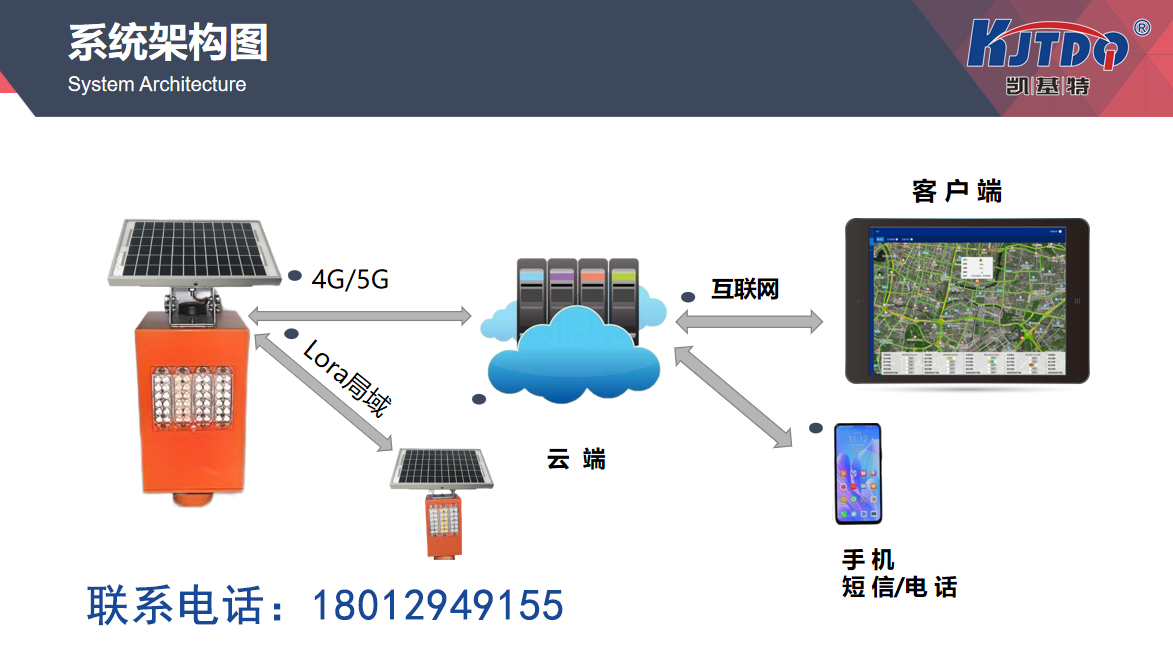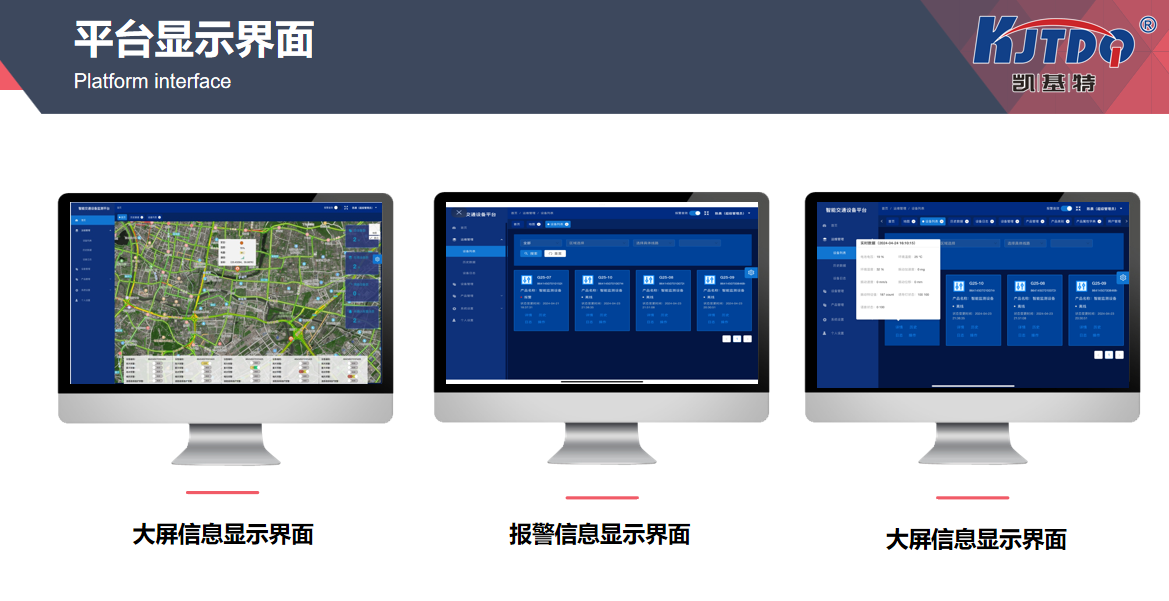Highways are the arteries of modern transportation systems, carrying a large volume of vehicle traffic and important cargo transportation. However, under certain geological conditions, especially in mountainous and sloping areas, the risk of landslides on highway sections becomes a serious safety hazard. In order to address this challenge, intelligent monitoring technology for landslides on high-speed roads has emerged. This technology utilizes advanced monitoring methods and intelligent algorithms to monitor and warn of landslide risks in real time, thereby protecting the safety and smoothness of highways. This article will explore in detail the key elements, application effects, and future development trends of intelligent monitoring technology for landslides on highway sections.

The intelligent monitoring system for landslides on high-speed roads mainly consists of the following core components:
Sensor NetworkThe system collects real-time data through various sensors deployed on highway sections. These sensors include soil strain gauges, displacement sensors, humidity sensors, and meteorological monitoring equipment. Soil strain gauges can monitor soil deformation and stress, displacement sensors can measure surface displacement, humidity sensors track changes in soil moisture, and meteorological monitoring equipment provides weather data. By integrating the data from these sensors, we can gain a comprehensive understanding of the geological and environmental conditions of the road section.
Data transmission and processingThe collected data is transmitted to the central processing platform via wireless network. The platform is equipped with powerful data processing and analysis capabilities, which enable real-time analysis of monitoring data through data fusion and intelligent algorithms. The system can identify potential landslide risks and generate warning information. Advanced algorithms can also perform trend prediction and provide long-term predictions of landslide risks.
Warning and response mechanismOnce the system detects a landslide risk or abnormal situation, it will immediately issue a warning signal. Warning information can be notified to relevant departments and personnel through SMS, email, or alert systems. The system can also automatically trigger emergency response measures, such as closing roads, arranging maintenance or diverting traffic, thereby reducing the impact of landslides on highway safety.
In practical applications, intelligent monitoring technology for landslides on high-speed roads has demonstrated significant effects in multiple regions. For example, in some mountainous highways, after installing a landslide intelligent monitoring system, the system can track soil and environmental changes in real time and warn of landslide risks in advance. This enables the highway management department to take timely measures, such as reinforcing the soil, building drainage systems, or temporarily closing roads, to avoid major accidents and economic losses caused by landslides.
In addition, the landslide intelligent monitoring system also provides valuable data support for long-term road section management. By accumulating and analyzing long-term data, the system can identify the patterns and laws of landslide occurrence, thereby optimizing road maintenance and management strategies. This not only improves the safety of the road, but also enhances the efficiency of maintenance work.
Although intelligent monitoring technology for landslides on highways has brought significant safety improvements, it still faces some challenges in practical applications. Firstly, there is the issue of technical cost. The cost of high-precision sensors and data processing platforms is relatively high, which may be a burden for some projects with limited budgets. Next is the issue of data management and analysis. How to effectively process and interpret a large amount of monitoring data, and extract useful information from it, is an important issue in system design and application.
In the future, with the development of technology and the reduction of costs, intelligent monitoring technology for landslides on high-speed roads will become more popular and efficient. The new generation of sensors and intelligent algorithms will further enhance the performance and accuracy of the system. In addition, the introduction of artificial intelligence and big data analysis technology will make warning systems more intelligent, able to predict and identify landslide risks more accurately, thereby improving the level of road safety management.

Intelligent monitoring technology for landslides on highway sections plays a crucial role in ensuring highway safety. Through real-time monitoring, data analysis, and warning mechanisms, this technology can not only effectively identify and respond to landslide risks, but also provide scientific basis for the long-term maintenance and management of highways. Despite facing some challenges, with the continuous advancement of technology and the popularization of applications, the prospects of landslide intelligent monitoring technology are very broad, and it will continue to safeguard the safety and smoothness of highways.
1. How does the intelligent monitoring system for landslides on high-speed roads respond to extreme weather conditions?
Intelligent monitoring systems for landslides on high-speed roads are typically designed with strong adaptability to cope with extreme weather conditions. The sensors and devices in the system have undergone strict protection testing and can operate normally in harsh environments such as extreme temperatures, high humidity, and strong winds. In addition, the system will automatically adjust the data collection frequency and transmission method to cope with the challenges brought by weather changes. For example, the system can increase the frequency of collecting meteorological data to more accurately assess the impact of weather on landslide risk. Through these measures, the system can maintain efficient operation and ensure timely monitoring and warning of landslide risks even under extreme weather conditions.
2. If the landslide intelligent monitoring system malfunctions, will it affect road safety?
The design of the landslide intelligent monitoring system takes into account the risk of system failure and adopts redundant measures to ensure road safety. If the main system fails, the backup system will immediately take over to ensure the continuous operation of monitoring and warning functions. In addition, the system will conduct regular self checks and maintenance to promptly identify potential issues and fix them. To further ensure safety, the system can also be combined with traditional manual inspection and testing procedures to ensure that even in the event of technical failures, manual inspection and maintenance can still be carried out.
3. How to ensure the effectiveness and accuracy of the landslide intelligent monitoring system?
Ensuring the effectiveness and accuracy of the landslide intelligent monitoring system requires comprehensive consideration of multiple aspects. Firstly, choose high-quality and validated sensors and devices that can provide accurate data collection. Secondly, the system should undergo detailed calibration and testing to ensure the accuracy of the data. Regular system maintenance and inspection are also essential, as they can promptly identify and fix potential issues. In addition, data analysis algorithms need to be constantly updated and optimized to adapt to new geological and environmental conditions. Finally, compare with the actual situation, verify the accuracy of the system's warning, and make adjustments and improvements based on feedback to ensure the long-term effectiveness of the system.